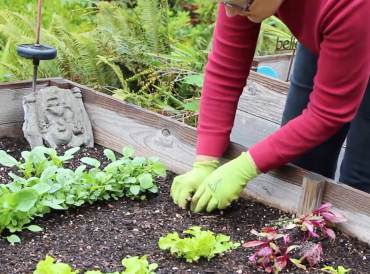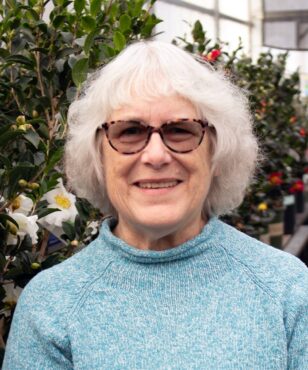In the West Sound growing climate, gardeners can often plant seeds and starts in July through September for late fall, winter and sometimes even early spring harvest. The most important thing to remember is soil temperatures and how much water is needed. Many gardeners extend the season even farther by using hoop houses and floating row covers.
Vegetables to directly sow in the soil from seeds all during July through September include radishes, carrots, lettuce, kale, beets, spinach, beans and peas.
In a sheltered garden where sunlight is available for at least six to eight hours a day, sow seeds each week for several weeks for continuous growing and harvesting of many of the leaf lettuces and other salad greens.
 Another choice is planting starts of the vegetables that will grow happily in cooler temperatures. Look for starts of broccoli, kale, chard, beets and peas available at local nurseries, farmers markets and garden centers. Be aware that these starts come in and sell out quickly, and you’ll want to get them in the ground or into containers as soon as possible, so they can make good, strong roots.
Another choice is planting starts of the vegetables that will grow happily in cooler temperatures. Look for starts of broccoli, kale, chard, beets and peas available at local nurseries, farmers markets and garden centers. Be aware that these starts come in and sell out quickly, and you’ll want to get them in the ground or into containers as soon as possible, so they can make good, strong roots.
Note that it may be pushing the envelope to plant bean seeds now, but the weather has been surprisingly toasty and bean seeds might just germinate now. Soak them first overnight to give them a head start. Also explore some of the Asian greens available on the market; many of these greens can thrive in our maritime climate.
The two most important reasons why seeds fail to germinate are planting too deeply and not giving them enough water. The next two reasons are not enough sunlight and the temperature (either too hot or too cold).
Last but not least, many seeds, starts and plants fail because gardeners overfertilize. Fertilizers should be mixed into the soil at planting time, and then a few weeks later a liquid fertilizer should be applied. After that, other than watering and harvesting, the plants happily grow without any pampering and coddling from us. It’s their job to produce fruit and leaves for gardeners to harvest, eat and enjoy.
Beans, peas and broccoli will continue to produce as long as they are picked frequently.
Broccoli produces side shoots. Many think the side shoots are even tastier than the main broccoli stalks.
Keep peas and beans picked continuously to have a steady stream of tasty morsels on the dinner table.
Kale, chard and lettuces can be cut back, leaving a few leaves behind with roots still in the soil, and they’ll resprout again and again.
Carrot seeds are so tiny. They need to be sprinkled on top of the soil with just a little dusting of soil on top. Press the soil and underlying seeds gently down with hands to firm the covering and help the seeds make contact with the soil. Moisten daily; a spray bottle filled with water works well or a fine spray on hose attachments.
Carrots seem to take the longest to germinate (three to four weeks). Don’t mistake their first two sprigs of leaves for weedy grasses. Two thin leaves pop up first, followed by one or two ferny leaves, and then the carrots are off and producing. Carrots can be left in the ground all winter long or harvested as needed.
Always read the back of the seed packets for instructions. You’ll find how long until the seeds germinate, how long it will be until the plant can be harvested and often you’ll find a chart for what time of year to plant. If you’ve missed the window of opportunity on your favorite veggies to plant, be sure to use a cover crop in your garden beds. The cover crops hold the soil in place, keep most weeds at bay and can be tilled in to become rich green manure in early spring.
It’s great fun to grow food to sustain families and friends. And, when there’s too much to consume, remember to take extra produce to local food banks. Some produce shouldn’t be washed ahead of time; check with the food bank for the correct way to process it for delivery.

























